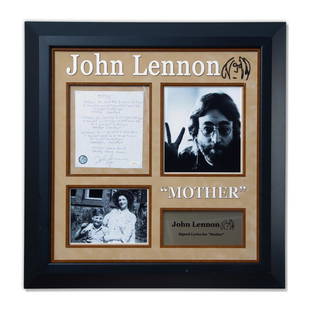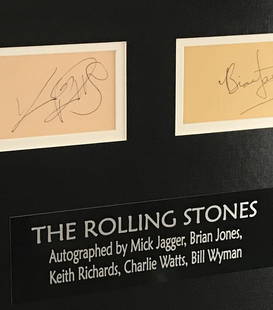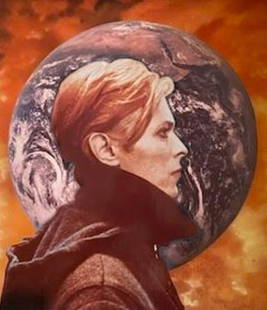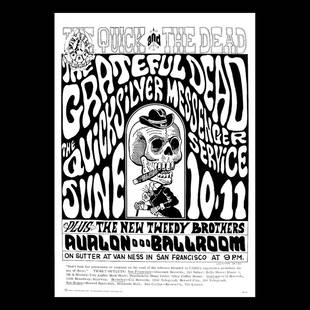
Exceptional Stravinsky TLS Mentioning Everybody including Debussy!
Similar Sale History
View More Items in Music & Concert MemorabiliaRelated Music & Concert Memorabilia
More Items in Music & Concert Memorabilia
View MoreRecommended Entertainment Memorabilia
View More



Item Details
Description
STRAVINSKY, IGOR. (1882-1971). Russian-born, American compose of The Rite of Spring, Petrushka, The Firebird, and many other 20th-century masterpieces. TLS. (In red ink: “Igor Stravinsky”). 2/3p. 4to. Venice, August 27, 1958. On Hotel Bauer Grunwald onionskin stationery. To Columbia Records publicity director Deborah Ishlon.
“...It seems to me ridiculous not to use photographs of people who are discussed in the text. These people are Ravel (with me), Debussy (I and Debussy), Rimsky-Korsakov (the family photo in TIME cover story of me in July 1948 which LIFE reprinted), Boulez (the one I saw in NY), Picasso (my drawing), Chagall (I should think it would be very easy and quick to get this from Lipnitsky). And, it seems to me silly to use photographs of Prokoviev, Gide, Rhespigi (sic.), Cocteau who do not figure in the book we are now preparing. If the pertinent photos of Ravel, Debussy, Rimsky, Picasso, etc. are not useable then more current photos of me are preferable. I have nothing against keeping the photo with beret and I am glad that the photo with my wife will be included. Boulez is in the text, why should he not be in the photos. It can’t be too late to organize this material as I have not yet had Doubleday first proofs, and even if I do receive them shortly, I will have no time to read them in the next several weeks because of my concerts...[a holograph postscript reads:] Excuse me this dirt!”
After abandoning the law career his parents had planned for him, Stravinsky devoted himself to music, studying under Russian composer Nikolai Rimsky-Korsakov (1844-1908) who helped Stravinsky with the libretto of The Nightingale. Stravinsky achieved instant notoriety with the 1910 Paris debut of his ballet The Firebird, followed by compositions for the Ballets Russes, that included Petrushka and his avant-garde and controversial Rite of Spring, which caused a near-riot during its 1913 Paris debut. Stravinsky’s 1927 opera Oedipus Rex was based on French poet, novelist, playwright, and artist Jean Cocteau’s (1889-1963) French libretto taken from Sophocles’ tragedy and was sung in Latin. In 1934, the same year he became a French citizen, Stravinsky composed his three-part melodrama, Perséphone, with a libretto by Nobel Prize winning French author André Gide (1869-1951).
Following the outbreak of the Russian Revolution, Stravinsky and his family lived as exiles in Switzerland, France, and moved to the United States in 1939, settling in Hollywood the following year. During the 1950s, Stravinsky toured internationally as a conductor of his own works and signed a contract with Columbia Records to conduct and record all his compositions.
French composer Maurice Ravel (1875-1937) was a friend from Stravinsky’s years in Paris as members of an artistic group called the Apaches. The composers dedicated work to each other, and Stravinsky showed Ravel the groundbreaking score of The Rite of Spring who predicted its lasting importance.
The Apaches were inspired by the music of French avant¬-garde composer Claude Debussy (1862-1918) who admired Stravinsky’s work and dedicated his suite En Blanc et Noir to him. In 1912, Debussy and Stravinsky played the four-hand piano arrangement of The Rite of Spring. Stravinsky’s 1920 Symphonies of Wind Instruments was composed in memory of Debussy.
Prominent French composer and conductor Pierre Boulez (1925-2016) headed such important orchestras as the New York Philharmonic, BBC Symphony Orchestra and Chicago Symphony Orchestra and is remembered for his performances of Ravel, Debussy and Stravinsky. Boulez conducted the European premiere of Stravinsky’s Agon in 1957 and enjoyed a brief friendship before a falling out over the disastrous 1958 performance of Stravinsky’s Threni in Paris. Boulez’s composition ...explosante-fixe... was conceived as a tribute to Stravinsky shortly after his death. It was the Ballet Russes founder and impresario, Sergei Diaghilev, who introduced Stravinsky to the Spanish artist Pablo Picasso (1881-1973), and the pair became friends, collaborating on Stravinsky’s ballet Pulcinella, commissioned by Diaghilev, for which Picasso designed the costumes. In 1920, Picasso drew a portrait of Stravinsky and gave it to the composer. Russian-born, French artist Marc Chagall (1887-1985) designed the scenery and costumes for the newly founded New York City Ballet’s 1949 production of Stravinsky’s The Firebird. A friend of Chagall, Russian photographer Boris Lipnitsky (1887-1971), established a studio in Paris in 1921 where Paul Poiret’s introductions gave him entrée to photograph Josephine Baker, Cocteau, and Collette. He formed relationships with Michel Fokine, Russian composer and pianist Sergei Prokofiev (1891-1953) and Stravinsky, of whom he made a well-known portrait, depicting the composer seated at the piano, in 1926. Stravinsky and Prokofiev’s relationship often became contentious with each one criticizing the other. Stravinsky once declared Prokofiev the greatest Russian composer – after himself. Prolific Italian composer Ottorino Respighi (1879-1936), best known for his tone poems The Fountains of Rome and The Pines of Rome, composed several works for the Ballet Russes.
Our letter also mentions “Bob,” Stravinsky’s assistant and advisor Robert Craft (1923-2015), a conductor who lived and collaborated with the composer from 1948 until his death and helped influence his later musical style that included introducing him to 12-tone methodology. Also mentioned is Stravinsky’s second wife, Vera Stravinsky (1889-1982). The pair met in 1921, during their time with the Ballet Russes. Both were already married, Vera to Ballet Russes designer Serge Sudeikin. “Vera (née de Bosset), …was to appear in the non-dancing role of the Queen in the revival of The Sleeping Beauty. He [Stravinsky] fell deeply in love with her, and she with him. During the next 18 years they saw as much of each other as possible – mainly in Paris, but sometimes also when she was able to accompany him on concert tours,” (The New Grove Dictionary). After the death of Stravinsky’s first wife in 1939, the pair married in 1940.
Folded with two small holes on either side of Stravinsky’s signature where he has struck through several lines of type with a pencil. In very good condition.
“...It seems to me ridiculous not to use photographs of people who are discussed in the text. These people are Ravel (with me), Debussy (I and Debussy), Rimsky-Korsakov (the family photo in TIME cover story of me in July 1948 which LIFE reprinted), Boulez (the one I saw in NY), Picasso (my drawing), Chagall (I should think it would be very easy and quick to get this from Lipnitsky). And, it seems to me silly to use photographs of Prokoviev, Gide, Rhespigi (sic.), Cocteau who do not figure in the book we are now preparing. If the pertinent photos of Ravel, Debussy, Rimsky, Picasso, etc. are not useable then more current photos of me are preferable. I have nothing against keeping the photo with beret and I am glad that the photo with my wife will be included. Boulez is in the text, why should he not be in the photos. It can’t be too late to organize this material as I have not yet had Doubleday first proofs, and even if I do receive them shortly, I will have no time to read them in the next several weeks because of my concerts...[a holograph postscript reads:] Excuse me this dirt!”
After abandoning the law career his parents had planned for him, Stravinsky devoted himself to music, studying under Russian composer Nikolai Rimsky-Korsakov (1844-1908) who helped Stravinsky with the libretto of The Nightingale. Stravinsky achieved instant notoriety with the 1910 Paris debut of his ballet The Firebird, followed by compositions for the Ballets Russes, that included Petrushka and his avant-garde and controversial Rite of Spring, which caused a near-riot during its 1913 Paris debut. Stravinsky’s 1927 opera Oedipus Rex was based on French poet, novelist, playwright, and artist Jean Cocteau’s (1889-1963) French libretto taken from Sophocles’ tragedy and was sung in Latin. In 1934, the same year he became a French citizen, Stravinsky composed his three-part melodrama, Perséphone, with a libretto by Nobel Prize winning French author André Gide (1869-1951).
Following the outbreak of the Russian Revolution, Stravinsky and his family lived as exiles in Switzerland, France, and moved to the United States in 1939, settling in Hollywood the following year. During the 1950s, Stravinsky toured internationally as a conductor of his own works and signed a contract with Columbia Records to conduct and record all his compositions.
French composer Maurice Ravel (1875-1937) was a friend from Stravinsky’s years in Paris as members of an artistic group called the Apaches. The composers dedicated work to each other, and Stravinsky showed Ravel the groundbreaking score of The Rite of Spring who predicted its lasting importance.
The Apaches were inspired by the music of French avant¬-garde composer Claude Debussy (1862-1918) who admired Stravinsky’s work and dedicated his suite En Blanc et Noir to him. In 1912, Debussy and Stravinsky played the four-hand piano arrangement of The Rite of Spring. Stravinsky’s 1920 Symphonies of Wind Instruments was composed in memory of Debussy.
Prominent French composer and conductor Pierre Boulez (1925-2016) headed such important orchestras as the New York Philharmonic, BBC Symphony Orchestra and Chicago Symphony Orchestra and is remembered for his performances of Ravel, Debussy and Stravinsky. Boulez conducted the European premiere of Stravinsky’s Agon in 1957 and enjoyed a brief friendship before a falling out over the disastrous 1958 performance of Stravinsky’s Threni in Paris. Boulez’s composition ...explosante-fixe... was conceived as a tribute to Stravinsky shortly after his death. It was the Ballet Russes founder and impresario, Sergei Diaghilev, who introduced Stravinsky to the Spanish artist Pablo Picasso (1881-1973), and the pair became friends, collaborating on Stravinsky’s ballet Pulcinella, commissioned by Diaghilev, for which Picasso designed the costumes. In 1920, Picasso drew a portrait of Stravinsky and gave it to the composer. Russian-born, French artist Marc Chagall (1887-1985) designed the scenery and costumes for the newly founded New York City Ballet’s 1949 production of Stravinsky’s The Firebird. A friend of Chagall, Russian photographer Boris Lipnitsky (1887-1971), established a studio in Paris in 1921 where Paul Poiret’s introductions gave him entrée to photograph Josephine Baker, Cocteau, and Collette. He formed relationships with Michel Fokine, Russian composer and pianist Sergei Prokofiev (1891-1953) and Stravinsky, of whom he made a well-known portrait, depicting the composer seated at the piano, in 1926. Stravinsky and Prokofiev’s relationship often became contentious with each one criticizing the other. Stravinsky once declared Prokofiev the greatest Russian composer – after himself. Prolific Italian composer Ottorino Respighi (1879-1936), best known for his tone poems The Fountains of Rome and The Pines of Rome, composed several works for the Ballet Russes.
Our letter also mentions “Bob,” Stravinsky’s assistant and advisor Robert Craft (1923-2015), a conductor who lived and collaborated with the composer from 1948 until his death and helped influence his later musical style that included introducing him to 12-tone methodology. Also mentioned is Stravinsky’s second wife, Vera Stravinsky (1889-1982). The pair met in 1921, during their time with the Ballet Russes. Both were already married, Vera to Ballet Russes designer Serge Sudeikin. “Vera (née de Bosset), …was to appear in the non-dancing role of the Queen in the revival of The Sleeping Beauty. He [Stravinsky] fell deeply in love with her, and she with him. During the next 18 years they saw as much of each other as possible – mainly in Paris, but sometimes also when she was able to accompany him on concert tours,” (The New Grove Dictionary). After the death of Stravinsky’s first wife in 1939, the pair married in 1940.
Folded with two small holes on either side of Stravinsky’s signature where he has struck through several lines of type with a pencil. In very good condition.
Buyer's Premium
- 22%
Exceptional Stravinsky TLS Mentioning Everybody including Debussy!
Estimate $800 - $900
4 bidders are watching this item.
Get approved to bid.
Shipping & Pickup Options
Item located in New York, NY, usOffers In-House Shipping
Payment
Accepts seamless payments through LiveAuctioneers

Auction Curated By

Lion Heart Autographs

Lion Heart Autographs
Related Searches
TOP




























































![Bob Dylan "Tangled Up In Blue" Autograph Signed Lyrics, With Jeff Rosen COA: Bob Dylan[London, England], ca. 2013Bob Dylan "Tangled Up In Blue" Autograph Signed Lyrics, With Jeff Rosen COAAMSBob Dylan "Tangled Up In Blue" Autograph Signed Lyrics, With Jeff](https://p1.liveauctioneers.com/6306/332509/179322469_1_x.jpg?height=310&quality=70&version=1717621384)





![The rare first American edition of The Phantom of the Opera: [BOOKS] LEROUX, GASTON. The Phantom of the Opera. New York & Indianapolis: The Bobbs-Merrill Company, 1911. The first American editio](https://p1.liveauctioneers.com/292/330597/178279463_1_x.jpg?height=310&quality=70&version=1716409282)
![Elvis Presley 20th C. Fox "Wild in the Country" Employee's Starting Card and Closing Notice, Filming: Elvis Presley[Hollywood, California], February 9-10, 1961Elvis Presley 20th C. Fox "Wild in the Country" Employee's Starting Card and Closing Notice, Filming for Alternate Ending!EphemeraTwo](https://p1.liveauctioneers.com/6306/332509/179322490_1_x.jpg?height=310&quality=70&version=1717621384)

